[Bonsai Art] How to grow Monstera at home?
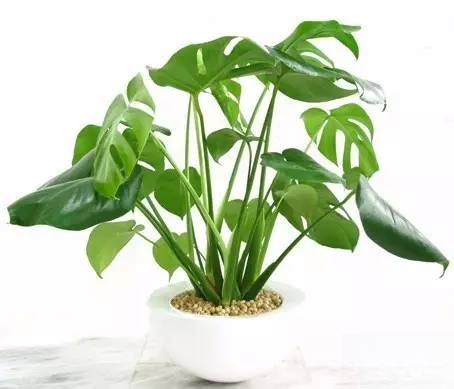
The edges of the Monstera leaf are deeply pinnate, with long oval holes between the veins, resembling the back of a thousand-year-old turtle, and the stems are multi-noded and bamboo-like, hence the name Monstera. Some people call it the wire orchid because it has many dark brown, thin aerial roots that extend far like electric wires. The Monstera leaf shape is peculiar, the leaf crown is majestic, and it is green all year round. It is elegant and generous when placed in the living room. In recent years, many families like to grow this flower. When cultivating Monstera at home, you should generally pay attention to the following points:
illumination
Monstera is a shade-tolerant plant that is most afraid of direct sunlight. Generally, it is taken out of the house from late April to mid-May and placed under the grape trellis in the courtyard or under the eaves, where it can get a little sunlight. The leaves of Monstera are phototropic, so when placing them, the leaves must face the sunlight, otherwise the plant will be twisted. It is best to bring it indoors in mid-to-late October, and then place it under a south-facing glass window to allow it to receive enough light. Wipe the leaves with a damp cloth every 10 days or so to facilitate photosynthesis and make the plant more beautiful.
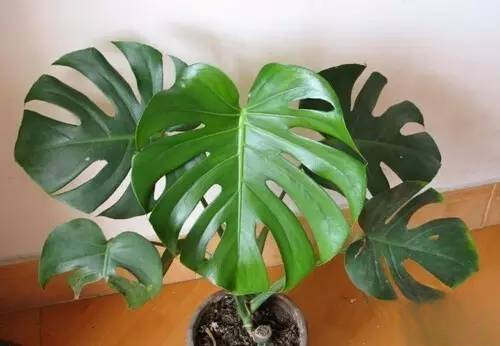
Watering
Watering is an important part of cultivating Monstera. Too little watering will stop the development of branches and leaves; too much watering may cause root rot and death; moderate watering will make the branches and leaves large. There are the following principles for watering Monstera: the first is "better to be wet than dry", that is, more water is needed than for ordinary flowers; the second is "two more and two less", that is, more water is needed in the hot summer season and less water is needed in winter; more water is needed for vigorously growing adult plants and less water is needed for newly planted seedlings. It should be noted that if the amount of water is too little, the development of branches and leaves will stop; too much water will cause root rot; moderate watering will make the branches and leaves large.
The symptoms of root rot caused by excessive watering are: the plant stops growing, the leaves droop, lose their luster, and the leaf surface is uneven. At this time, the plant should be moved to a shaded place immediately, and the amount of watering should be reduced to a minimum, as long as the pot soil is not dry. Use a watering can to spray water on the leaves several times a day, and stop fertilizing. In this way, the condition will gradually improve after about half a month of management. To prevent Monstera from being watered, you can use tap water. If you have goldfish at home, it is ideal to use the old water that is replaced every day to water Monstera.
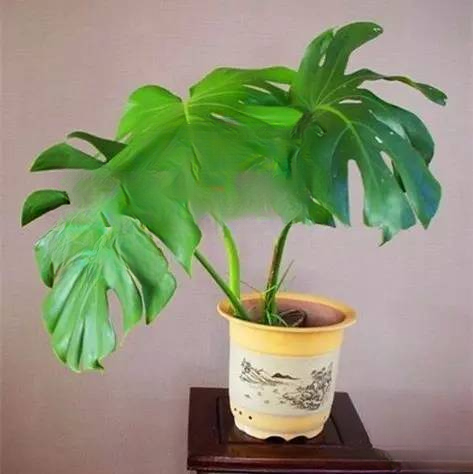
Fertilization
Monstera is a fertilizer-loving flower, and its demand for fertilizer is greater than that of common flowers. When repotting every year, the proportion of fertilizer soil can account for 1/3 or even more. Fertilizer soil has a wide range of sources. It can be collected in large quantities in autumn when broad-leaved trees shed their leaves, and a little soil and water can be added to make it retting; it can also be made by adding human feces and urine to soil. This fertilizer is highly effective and easy to use, but it should be fully decomposed. In addition, liquid fertilizer should be applied during the growth period of Monstera. Liquid fertilizer can be mixed with sesame paste residue, horseshoes and fishy water. When applying liquid fertilizer, it is necessary to apply thin fertilizer frequently, and do not apply concentrated fertilizer or raw fertilizer. Generally, water once every 10-15 days with fully decomposed thin liquid fertilizer.
Controlled watering in winter
Move the Monstera indoors in early October (before the Cold Dew), and gradually reduce watering from November. Keep the soil dry from December to February of the following year to increase the concentration of plant body fluid and enhance its cold resistance. However, the air should still be kept relatively humid. Spray the leaves with water close to room temperature every 7-10 days. No fertilizer is needed. Gradually increase the number and amount of watering after March.
Monstera grows fast, so it is advisable to repot it once a year in spring. When caring for it outdoors, it should be brought indoors in early October in northern areas, and placed in a place where it is not exposed to direct sunlight at noon, and prevented from being directly hit by cold wind, otherwise the leaves will turn yellow and fall off. In winter, the pot soil should be relatively dry. At this time, you need to spray the leaves with warm water once every 5-7 days, and wipe the leaves with a wet fine cloth once every half a month to keep the leaves fresh and bright. So as long as it is well maintained, it can remain green all year round for your indoor viewing.
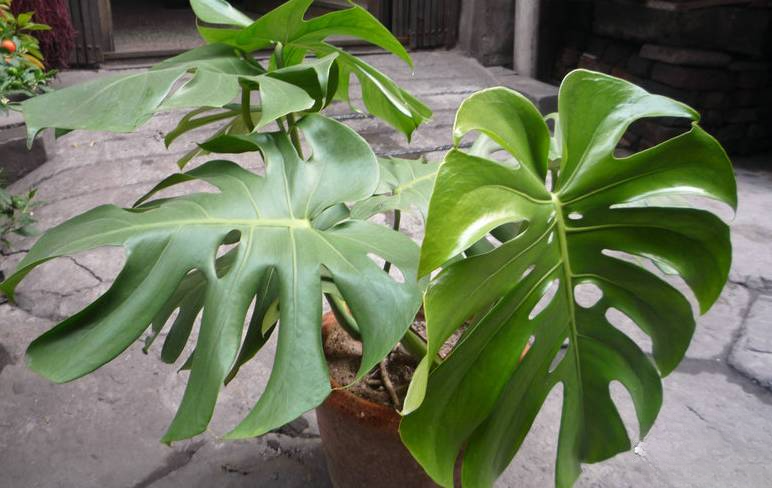
Monstera has a well-developed root system with strong absorption capacity. In addition to using a mixture of 1/3 leaf humus, garden soil, and river sand and adding a small amount of bone meal and bean curd cake residue as base fertilizer when potting, its demand for fertilizer during the growth period is greater than that of common potted plants. During the growth period, a thin fertilizer or compound fertilizer mainly composed of nitrogen fertilizer should be applied once a week, or a decomposed liquid fertilizer can be applied once, so that thin fertilizer is applied frequently. During the peak growth period, 1-2 times of foliar topdressing should be applied, and an aqueous solution of 0.10% urea and 0.20% potassium dihydrogen phosphate should be sprayed on the leaves. The back of the leaves should also be sprayed when spraying, so that the stems and leaves can be enlarged and the leaves are emerald green and shiny. Fertilization should be stopped during the winter.
Monstera is afraid of cold and likes warm and humid environment. It is a shade-tolerant plant. It can survive the winter if the indoor temperature is kept above 5℃. Potted plants can be cultivated indoors in bright scattered light all year round. If placed outdoors on the north balcony or under the porch in the spring and autumn rainy season, it will grow more vigorously. But in summer, it is best to place it near the north window sill indoors and pay attention to ventilation and cooling. If it is exposed to direct strong light in summer, the leaves will turn yellow easily, and even the leaf edges will burn, affecting the ornamental effect.
The suitable temperature for growth is 20-25℃. When the temperature drops to 10℃, the growth slows down, and at 5℃, the growth stops and enters a dormant period. In normal maintenance and management, attention should be paid to keeping the leaves clean, which is conducive to photosynthesis.
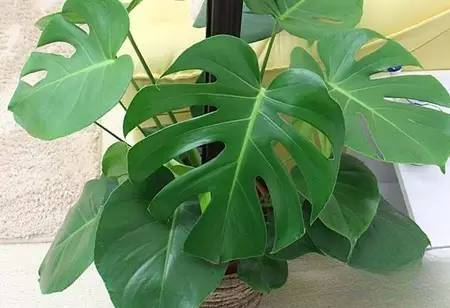
How to propagate Monstera
Reproduction can be done by sowing, cuttings and layering.
Monstera deliciosa blooms in summer by sowing. In order to increase the seed setting rate, artificial pollination is required. The best time for pollination is 9-10 am and 3-4 pm, and the success rate of pollination is high. It takes 15 months from pollination to seed maturity. The seeds are oblong, yellow-green, and look like green beans after being soaked in water. Sowing should be done indoors, either in the ground or in pots. Before sowing, soak the seeds in 40℃ warm water for 10 hours. The sowing soil can be plain sandy soil, and the sowing soil should be sterilized at high temperature. The spacing between plants and rows is 4-5cm, and the thickness of the soil is 0.2-0.8cm. Spray enough water after sowing, cover with a small arch shed, keep the room temperature at 20-25℃ after sowing, and keep the humidity in the shed above 90%. If the room temperature is too low during sowing, it will not only affect the emergence of seedlings, but also cause waterlogging and rot in the seeds. When the seedlings just emerge from the soil, the stems and leaves are not separated, and they are green curved cones. After a week, the cotyledons gradually unfold into a heart shape, forming a young plant with distinct stems and leaves. The seedlings have strong phototropism and grow faster under suitable conditions of light, temperature and humidity. When the seedlings are about 10cm tall and have two true leaves, they can be potted.
Cutting propagation is actually planting stem segments. Cut off the stem from the mother plant, keep the 3-4 stem bases below, and let the hidden buds at the nodes germinate. Soon after cutting the stem, two new stems will emerge and continue to grow. Cut the cut stem into 2-3 sections from the internodes, and use the following three methods for cutting:
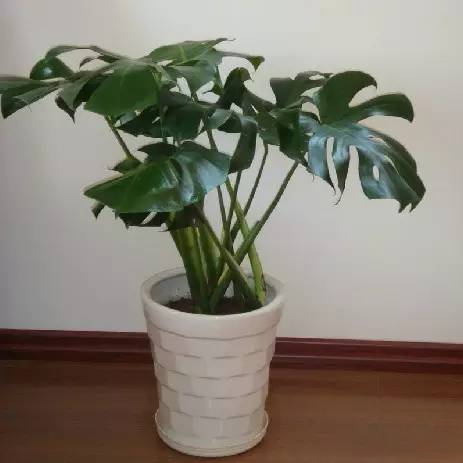
(1) Top leaf buried stem method: There are no terminal buds and axillary buds on the stems of Monstera. The original body of the new leaf is nurtured in the petiole of the upper stem leaf. Before it grows, it is covered by milky white longitudinal bracts. After the bracts split, new leaves grow. After the new leaves unfold, the stem also extends forward by one section, and at the same time, a groove is left in the lower part of the old leaves, so that the plant continues to grow upward. Therefore, when using the stem segment at the top of the stem for cuttings, it should be buried with the top leaf. After rooting, the bracts on the petiole will soon split and new leaves will grow. The plant can be formed in the year of cutting. When burying the stem, the stem segment can be planted upright in a cutting medium mixed with plain sand and peat soil, and a bamboo pole can be inserted to straighten the top leaf.
(2) Stem burying method with side leaves: Most of the stem segments cut from the upper part of the mother plant stem have leaves. It is best to keep one leaf when burying the stem, which is very beneficial for rooting and leafing. Generally, a leaf is kept at the base, and the stem segment is buried in the cutting medium at a 30o angle to the soil surface, and a bamboo pole is inserted to straighten the leaves.
(3) The method of burying stems without leaves: Most of the stem segments at the bottom of the stem do not have leaves. They can be gathered in a cutting container and buried shallowly in the substrate at an angle of 15 degrees to the soil surface, with the node ring at the tip flush with the soil surface and the crescent-shaped leaf scar at the tip facing upwards.
Regardless of which method is used, the aerial roots on the stem should be cut off before burying. Cuttings should be carried out in a well-ventilated room or under a shade shed in late spring and early summer. Cutting seedlings should always be kept in a hidden place, sprayed with water mist frequently to keep the substrate fully moist and increase the air humidity. At a soil temperature of 20-25℃, roots are expected to take shape in 35-50 days.
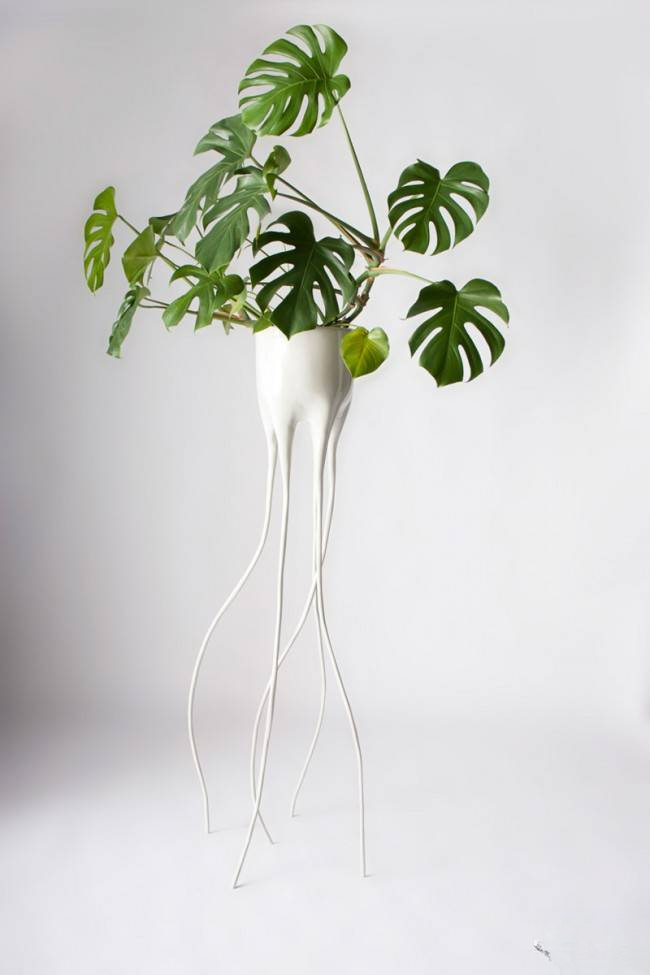
Layering propagation
It is done from May to August. During the growth period, the aerial roots grown between the stem nodes of the previous year are inserted into a water bottle or buried in the potting soil. Many fibrous roots will grow on them in about a month. When the roots grow to 2 cm, cut off the lower stem nodes of Monstera with a sharp knife, and plant the cut stem segment with aerial roots in the pot.
Propagation by division is carried out in summer and autumn. The side branches of large Monstera are split off in whole sections, with some aerial roots, and planted directly in wooden barrels or pots. This not only has a high survival rate but also allows the plants to take shape quickly.
Potted Planting and Appreciation of Monstera
Monstera, also known as Penglai banana, monster banana, monster taro, and perforated philodendron, is a perennial evergreen herbaceous foliage plant of the genus Monstera in the Araceae family. There are more than 20 species of plants in the same genus. It is native to the tropical forests of Mexico, and its origin is semi-vine type, with thick stems and many bamboo-like nodes. There are brown aerial roots growing and drooping on the stems, which can climb other objects to grow. The leaves are thick and leathery, alternate, dark green or green; the young leaves are heart-shaped and not perforated, and the leaves are rectangular when they grow up, with irregular pinnate deep cracks, from the leaf edge to the hole cracks near the veins, like a tortoise shell pattern; the petiole is 30 to 50 cm long, dark green; there are leaf scars, and there are bracts at the leaf scars, leathery, yellow-white. The flowers are shaped like Buddha flames, light yellow, and the fruits are edible. There are also variegated leaf variants in cultivation, with irregular white spots on the green leaves, which are very beautiful. Monstera, which is widely introduced and cultivated, is a famous indoor potted foliage plant with beautiful and unique appearance. It has the unique ability to absorb carbon dioxide at night and contains many organic acids. These organic acids can react chemically with the carbon dioxide absorbed at night and become another organic acid to be preserved. During the day, this changed organic acid is reduced to the original organic acid, and the carbon dioxide is decomposed to photosynthesis. Therefore, raising Monstera at home has a certain effect of purifying the air. It is often planted in small and medium-sized pots and placed in indoor living rooms, bedrooms and study rooms. It can also be planted in large pots and placed in hotels, restaurants, halls and indoors, or in the pools and under the big trees in the garden, which is quite tropical. The leaves can also be used as leaf material for flower arrangement.

Monstera is known for its shade tolerance and is suitable for indoor living rooms and walkways. In the south, it is mostly planted in courtyards, beside parks and pools, streams, beside rocks and in stone crevices. The holes and notches on the leaves of Monstera are both real and virtual, novel and interesting, and the aerial roots hanging from the pot are simple and elegant.
Monstera often grows on tall banyan trees. Its feathery parallel veins are clear and exposed, and it looks like a banana, so it is called "Penglai Banana". Monstera means "Green Monster" in Latin. Its flowers are very peculiar, with yellow-white buds like the bottom of a boat. The flowers are as big as a palm, with fleshy spikes inside. It can bear fruit, and the fruit is a berry. When the fruit is ripe, it can be used to make dishes. It has a sweet taste and smells like pineapple or banana. But be careful not to eat the unripe fruit because it is highly irritating. In the place of origin, residents call this fruit "the beautiful fruit given by the gods."